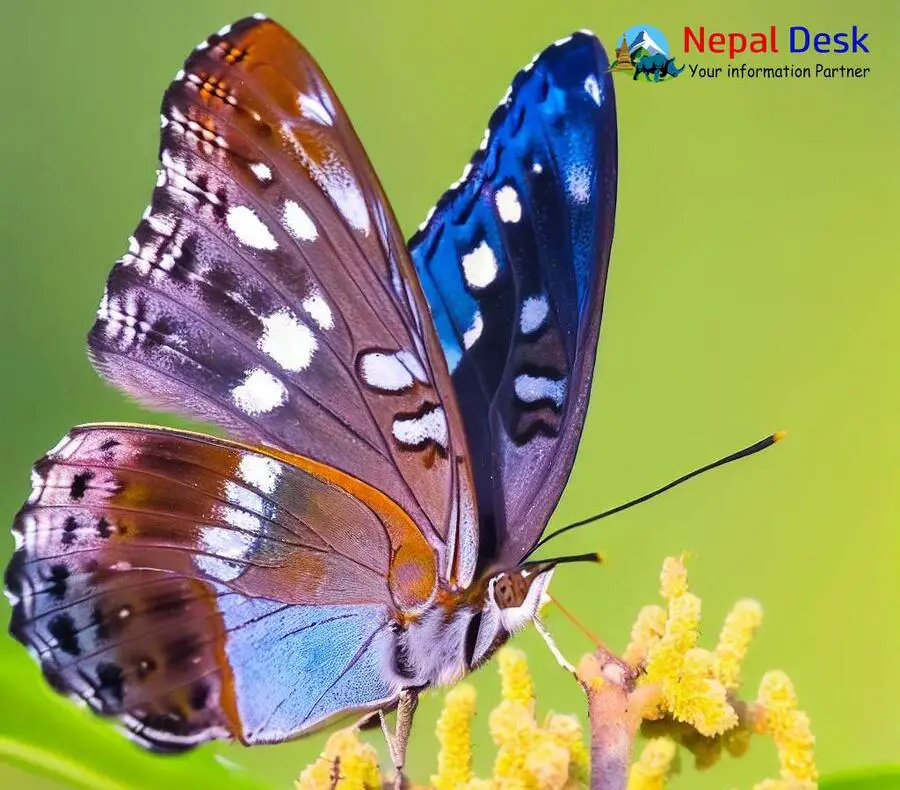
The Indian Purple Emperor Butterfly, scientifically known as Mimathyma ambica, is one of the most awe-inspiring members of the Nymphalidae family. Its iridescent purple wings create a stunning visual display that leaves butterfly lovers in total admiration. This species not only boasts remarkable beauty but also exhibits intriguing behaviour and reproduction pattern.
Habitat of The Indian Purple Emperor Butterfly
Primarily inhabiting forested regions in the Indian subcontinent, the Indian Purple Emperor Butterfly thrives in jungles or dense foliage. Although it can be found at various altitudes ranging from 300m to 2,100m above sea level, this butterfly species is most commonly observed in areas with lush vegetation and ample shade provided by trees.
Flight Behaviour and Pattern of The Indian Purple Emperor Butterfly
The flight of the Indian Purple Emperor Butterfly is often described as powerful and swift. This agile flyer can easily glide in between trees with grace. The butterfly's remarkable flight capabilities enable it to dodge potential predators with ease. In addition to its impressive flying skills, the Indian Purple Emperor displays territorial behaviour where males set up a domain by perching on treetops or sunlit leaves.
Life Cycle of The Indian Purple Emperor Butterfly
The life cycle of the Indian Purple Emperor begins when females lay their eggs on host plants such as Celtis species. Once hatched, the young caterpillars feed voraciously on leaves developing through various instar stages before forming a chrysalis. After emerging from the chrysalis, adult butterflies exhibit their captivating wings and engage in their elaborate mating rituals.
Features and Behaviour: Male and Female Indian Purple Emperor Butterfly
Males of the Indian Purple Emperor Butterfly are adorned with a flashy iridescent purple sheen on their wings, particularly noticeable when sunlight falls on them. This beautiful display is primarily used for attracting females during the mating season. Male butterflies also engage in puddling, a behaviour where they extract minerals from damp soil or dung, to enhance their reproductive success.
Female Indian Purple Emperor Butterflies are comparatively less vibrant than their male counterparts, with brownish-grey wings adorned with white markings. This cryptic colouration helps them camouflage amidst the foliage to protect against predators. Female butterflies invest their energy in finding suitable host plants where they can lay eggs, ensuring the survival of the next generation.
Distribution and Spotting of The Indian Purple Emperor Butterfly in Nepal
The Indian Purple Emperor Butterfly is distributed across various regions in Nepal, such as lowland Terai to hilly regions. To increase your chances of spotting this mesmerizing butterfly species, explore densely forested areas with abundant shade and visit national parks or protected wildlife sanctuaries that provide a safe haven for a variety of butterfly species, including the Indian Purple Emperor.
In conclusion, the Indian Purple Emperor Butterfly is a fascinating species that combines breathtaking beauty and intriguing behaviour patterns. Discovering more about this extraordinary creature will not only deepen your appreciation for nature but also generate awareness of the significance of protecting our biodiversity. Happy exploring!
